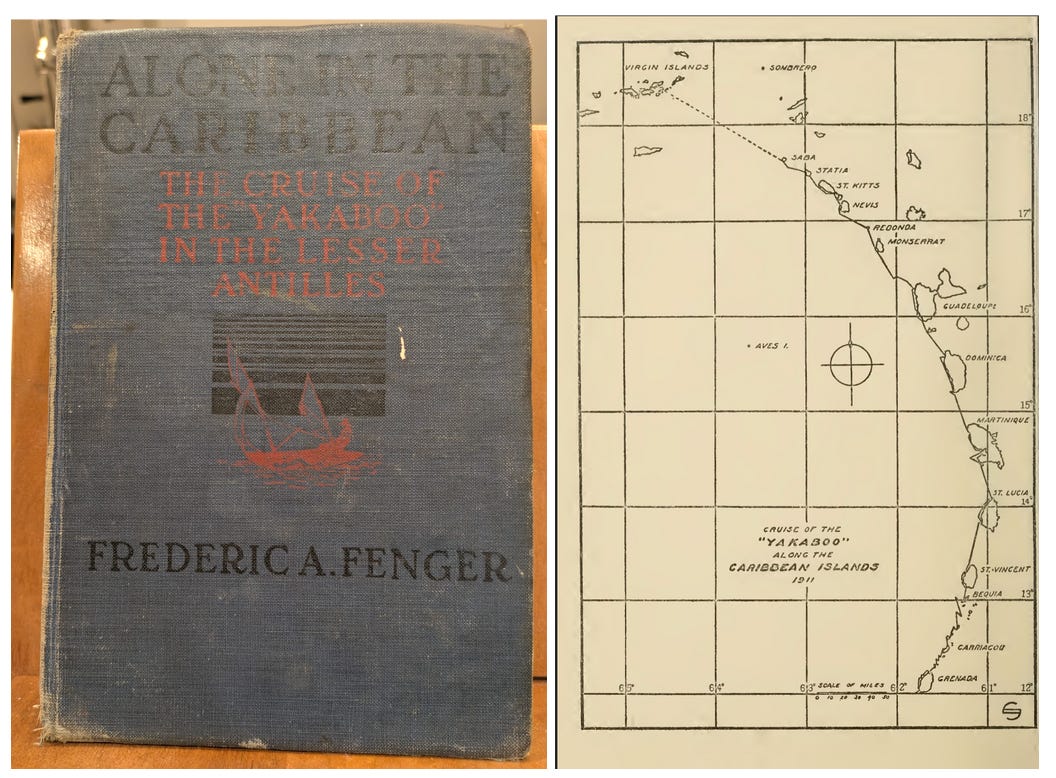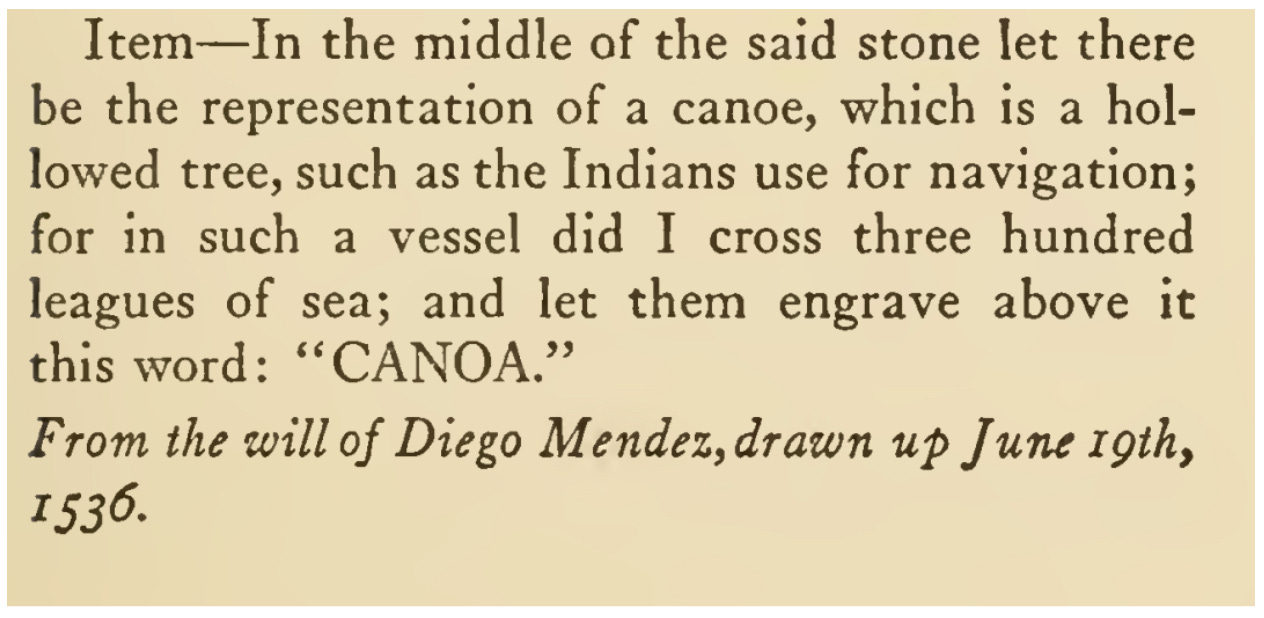Chasing Diego
The story of an audacious canoe voyage, a dusty old book, and the path to uncover the first-hand account of this daring voyage.
Article by Eric Miller
This is a patch quilt story, stitched together from the frayed remnants of a few smaller stories. It’s the story of a dusty old book. It’s the story of a desperate and audacious open ocean voyage in a canoe, that happened over 500 years ago. But, this is mostly the story of the absolutely fascinating path followed to uncover what may be the only surviving first-hand account of that daring voyage - an account on the precipice of being lost to time.
And, oddly, it also ends up being the story of the practical application of a niche academic discipline called paleography—the study of ancient writing systems and the deciphering of historical manuscripts. It's going to get weird, folks— super weird.
This bizarre and wonderful story begins in the most unexpected of places: the opening pages of a familiar book: Alone in the Caribbean: being the yarn of a cruise in the Lesser Antilles in the sailing canoe Yakaboo, written by Frederick Fenger in 1917.
Neither Fenger, nor his book, are exactly household names. In fact, many small-craft enthusiasts will be surprised to learn that, despite the book being named “historically significant,” it doesn't even have a Wikipedia entry. Neither does Fenger, nor the Yakaboo. Dark times we live in, dark times.
But, to the small-craft community, Fenger needs no introduction. The tale of his 800nm journey through the Caribbean, in a sailing canoe with no rudder, places Fenger alongside the Shackletons and Slocums of small boat history. I have a tattered replica print of the book that always seems to end up onboard. And, a few months ago, I stumbled across an original first edition print of Fenger’s book (pictured above), on sale for a reasonable price. So, I snapped it up, and it is now the oldest thing that I own.
And, while this article is neither about Fenger nor his book, that specific 100-year-old copy of his book is ground zero for the rest of this crazy story.
You see, when the book arrived, I did what anybody would do. I donned a pair of latex gloves—just like they do in the movies—and delicately thumbed through the musty pages. I thumbed past the copyright page indicating it was published in 1919. I thumbed past the table of contents, past the foreword, and skimmed some of the chapters.
But that foreword caught my attention—so I went back to it. There was something about reading it in this actually-100-year-old version that felt like Fenger speaking aloud, directly to me. They were, of course, the same words written in my replica copy. But they had never really caught my attention like this before. Here is the passage, which is a quote taken from the last will of someone named Diego Mendez. In this, Mendez is giving instructions for the design of his gravestone:
1536—that’s a long time ago. Even for Fenger, that would have been a 400 year old quote. How did Fenger even know it? Where was it published that he would have been able to learn of it, and then quote it?
300 leagues—that’s…uh….782 nautical miles 2. That’s 60nm farther than Shackleton, and he was knighted. Who the hell is this Mendez character, anyway? And, why don’t we know more about him like our other small-boat heroes from history?
One thing that is clear is why Fenger quoted Mendez: to pay tribute to the person who inspired his own adventures. A “nod of the hat across the centuries” if you will, to a man who proved that the kinds of things Fenger wanted to do in his own small boat, could be done.
Ok, señor Mendez, I’ll bite. Let’s figure out who you are. And, most importantly, let’s learn what can be discovered about your epic canoe adventure.
Chasing down Diego Mendez began like you might imagine: with a liberal application of Google-Fu. It wasn’t hard to learn that he gained historical fame as part of Christopher Columbus’s inner circle—a trusted friend and essential member of Columbus’ fourth expedition in the early 1500s. The circumstances surrounding Mendez’s epic canoe journey are also part of the historical record, yielding many search results like the one below:
Keep reading with a 7-day free trial
Subscribe to Small Craft Advisor to keep reading this post and get 7 days of free access to the full post archives.


